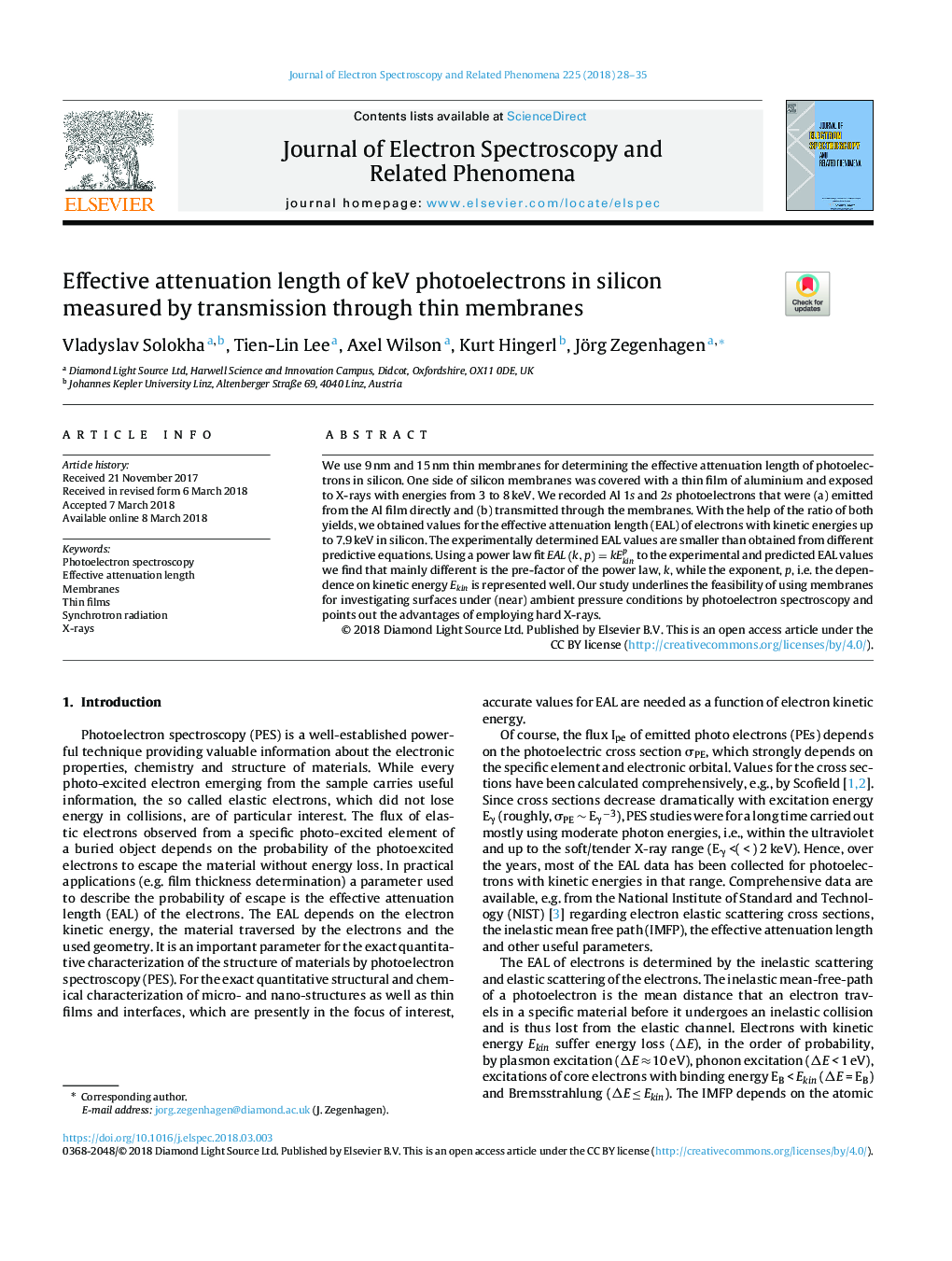| Article ID | Journal | Published Year | Pages | File Type |
|---|---|---|---|---|
| 7839335 | Journal of Electron Spectroscopy and Related Phenomena | 2018 | 8 Pages |
Abstract
We use 9â¯nm and 15â¯nm thin membranes for determining the effective attenuation length of photoelectrons in silicon. One side of silicon membranes was covered with a thin film of aluminium and exposed to X-rays with energies from 3 to 8â¯keV. We recorded Al 1s and 2s photoelectrons that were (a) emitted from the Al film directly and (b) transmitted through the membranes. With the help of the ratio of both yields, we obtained values for the effective attenuation length (EAL) of electrons with kinetic energies up to 7.9â¯keV in silicon. The experimentally determined EAL values are smaller than obtained from different predictive equations. Using a power law fit EAL(k,p)=kEkinp to the experimental and predicted EAL values we find that mainly different is the pre-factor of the power law, k, while the exponent, p, i.e. the dependence on kinetic energy Ekin is represented well. Our study underlines the feasibility of using membranes for investigating surfaces under (near) ambient pressure conditions by photoelectron spectroscopy and points out the advantages of employing hard X-rays.
Keywords
Related Topics
Physical Sciences and Engineering
Chemistry
Physical and Theoretical Chemistry
Authors
Vladyslav Solokha, Tien-Lin Lee, Axel Wilson, Kurt Hingerl, Jörg Zegenhagen,
